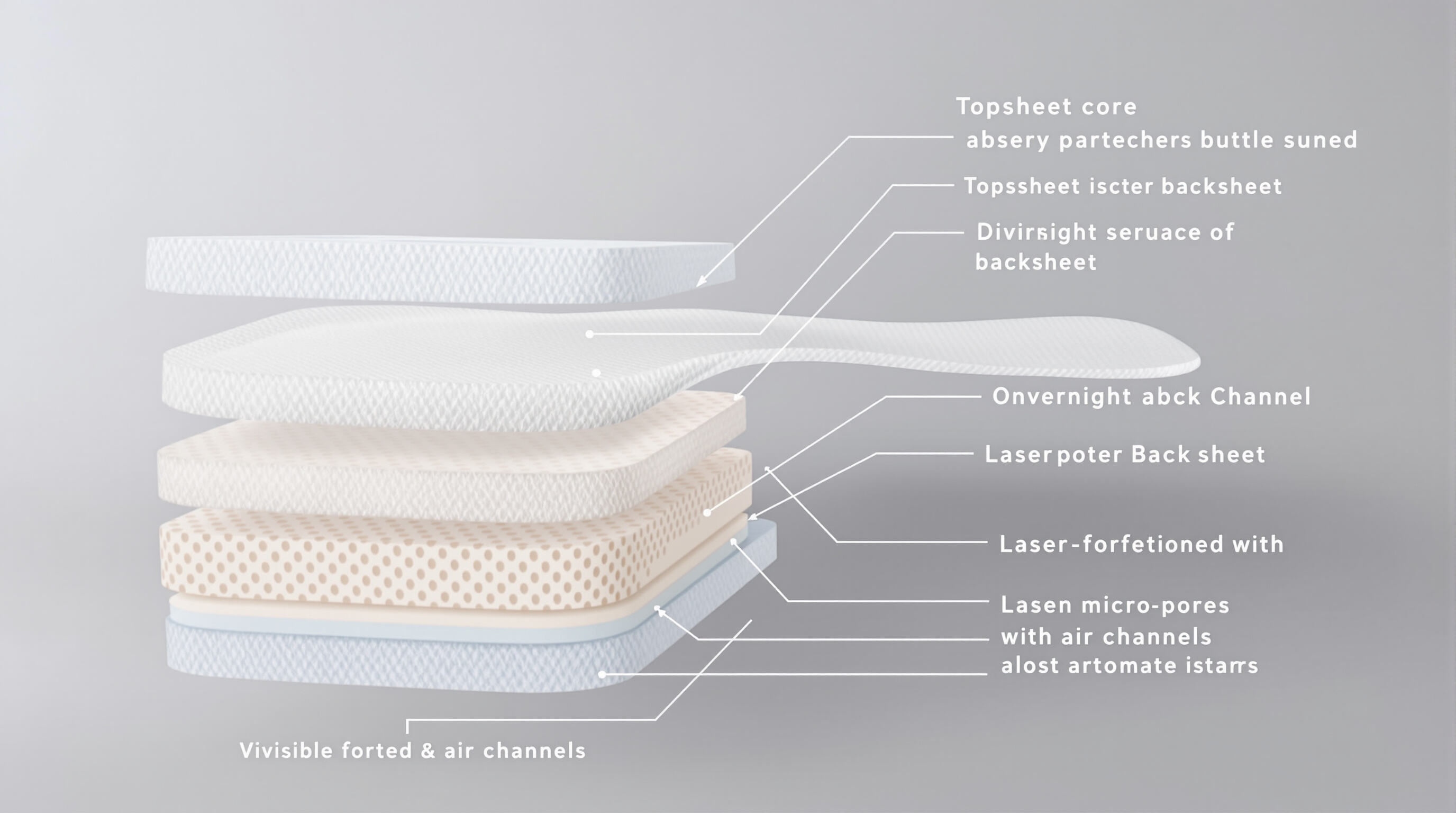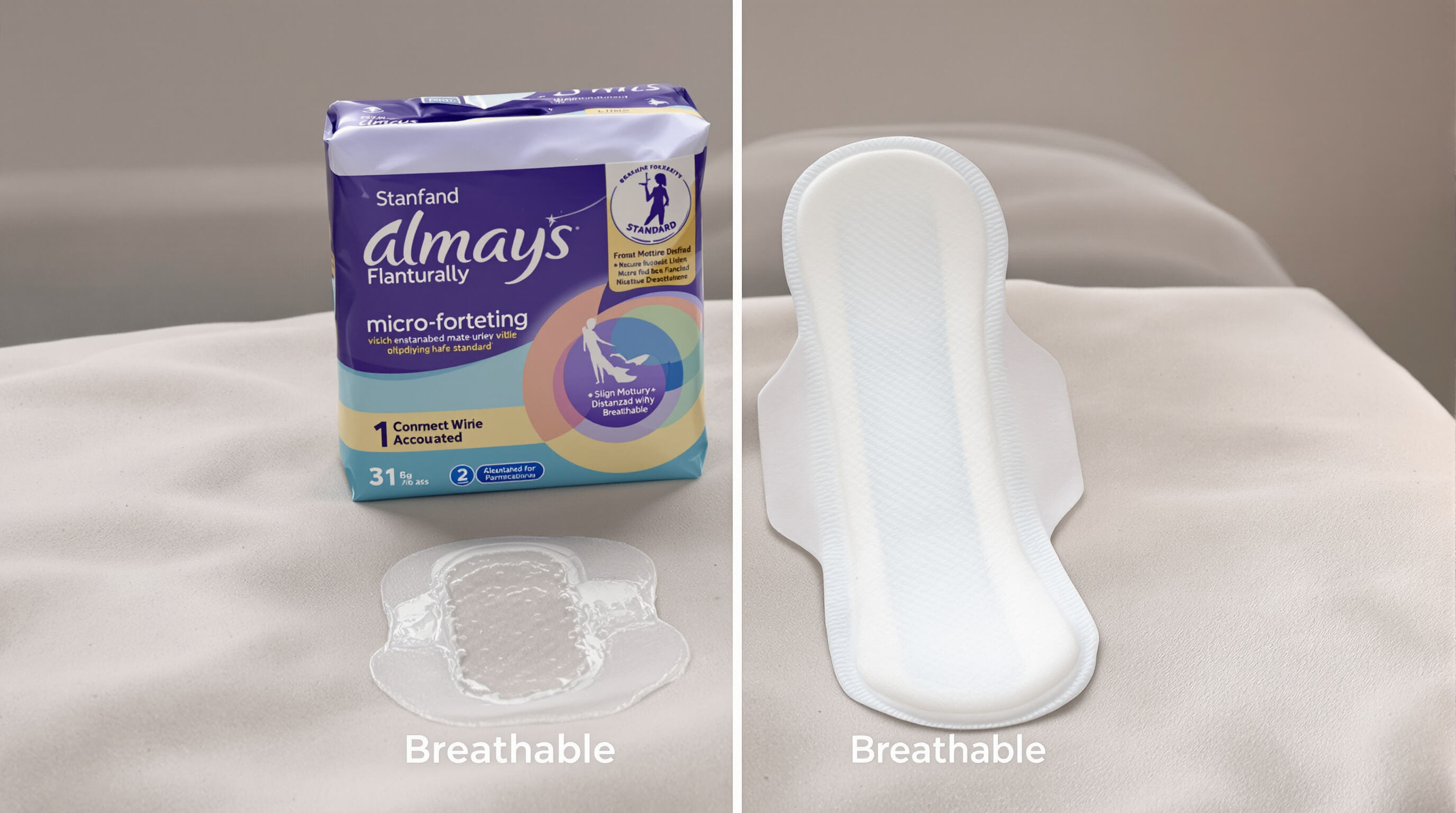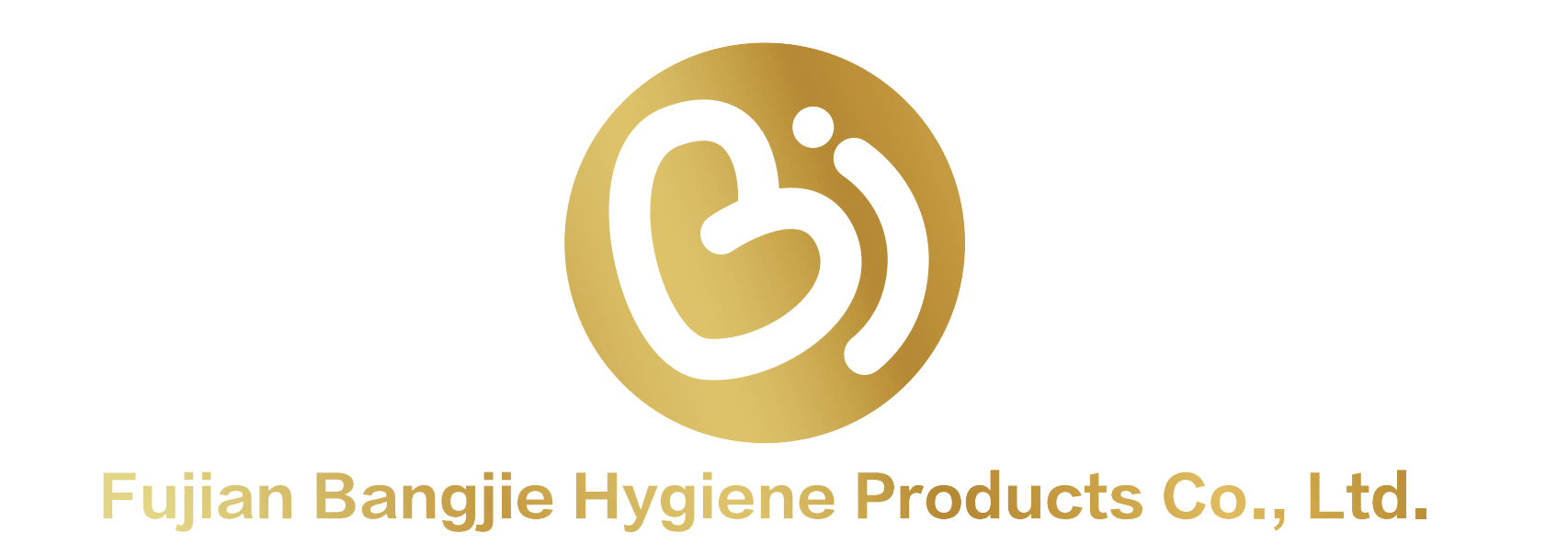Overnight Sanitary Pads With Breathable Backsheets for Hot-Climate Markets
The Unique Challenges of Overnight Sanitary Pads in Hot and Humid Climates
Breathable Menstrual Pads for Hot and Humid Climates: Addressing Discomfort During Extended Wear
When it gets really hot and humid, regular overnight pads can feel absolutely miserable because they trap all that moisture right against the skin. After wearing them for those long stretches between midnight and morning (sometimes 8 to even 12 hours), body sweat mixes with menstrual flow creating a damp spot that just rubs and irritates constantly. The newer breathable pads made specifically for warm weather tackle this problem differently. They have tops that pull moisture away from the body and backs that let vapor escape, cutting down on surface humidity by around 40% according to research from Ponemon in 2023. Some clever tech innovations now include tiny holes in plastic films and natural materials that create air pathways. These features keep things ventilated while still holding everything in place all through the night.
Climate-Specific Menstrual Care in Warm Weather and Its Impact on User Health
When people spend too much time in contact with wet, non-breathable fabrics, it messes with their skin's natural pH balance and makes the protective layer weaker. This puts them at higher risk for developing rashes which are actually 37 percent more common in hot humid areas around the world, plus various fungal problems too. The sticky stuff on pads just doesn't hold up well when there's so much moisture in the air. Pads tend to move around and leak while someone sleeps because of this issue. Newer products designed for different climates now incorporate special medical grade adhesives that have been put through tests at 90% humidity levels. These newer models also feature breathable inner layers that keep things drier compared to regular pads. Tests show they stay dry about 75% longer overall, which means better hygiene and much improved comfort throughout the night.
Common Issues With Traditional Overnight Sanitary Pads in Tropical Regions
- Non-breathable backsheets: Plastic layers trap heat, raising skin temperature by 2–3°C.
- Adhesive failure: Moisture degrades glue strength, causing slippage.
-
Odor retention: Trapped moisture accelerates bacterial growth, with 68% of users citing odor as a primary concern.
Solutions include antimicrobial top layers and humidity-responsive absorbent gels that actively manage moisture and reduce microbial activity.
Material Innovations That Enhance Breathability in Overnight Sanitary Pads

Material Choices and Skin Sensitivity Considerations in Pad Design
For people with sensitive skin living in humid areas, hypoallergenic materials really make a difference. Natural plant fibers like bamboo and even banana pulp tend to breathe better than those synthetic fabrics we all know too well, which means fewer skin irritations. Recent research from last year looked at this stuff too. They discovered that when using organic cotton as the top layer material, there was about a 32 percent drop in rashes during tests conducted in tropical climates. The reason? These cotton materials let moisture escape faster and feel softer against the skin. That makes them pretty good choice if someone needs to wear clothing for long periods without their skin reacting badly.
Construction and Layering of Sanitary Pads: Topsheet, Absorbent Core, and Backsheet Synergy
Optimal breathability relies on coordinated layer performance:
- Topsheet: Micro-porous nonwoven fabrics achieve liquid intake in 1.2 seconds
- Absorbent core: Cross-linked cellulose fibers prevent gel blockage while preserving internal airflow
- Backsheet: Polyethylene films with 5–8μ micropores allow vapor escape at 38% higher rates than standard backsheets
This layered synergy ensures rapid absorption, sustained dryness, and effective moisture vapor transmission.
Menstrual Pad Materials That Prevent Moisture Buildup and Irritation
Advanced cellulose-pulp blends in absorbent cores retain 85% dryness after 8 hours through optimized capillary action. When paired with antimicrobial finishes, these materials reduce bacterial growth by four times in high-humidity environments compared to conventional SAP (Superabsorbent Polymer) cores, directly addressing odor and infection risks.
Micro-Perforated and Moisture-Wicking Backsheet Technologies in Breathable Overnight Pads
Top-performing thermal comfort solutions integrate two key technologies:
- Laser-perforated backsheets: 12–15 holes/cm² enhance airflow while maintaining leak resistance
- Dual-density moisture-wicking layers: Directional fabrics move vapor away from the skin at 0.8 mL/min
A six-month clinical trial in Southeast Asia showed these features reduced nocturnal discomfort by 61% compared to non-breathable pads (International Journal of Gynecology, 2023).
Design Principles for Breathable Backsheets in Tropical Overnight Pads
Effective breathable backsheet design balances leak protection with airflow to minimize skin irritation. With nighttime use averaging 8–10 hours in humid regions, even slight moisture retention can increase rash risk by 47% (Dermatology Insights 2023).
Pad Breathability and Airflow Design for Preventing Rashes During Sleep
Microporous backsheets with 5–10 micron pores block menstrual fluid—typically 120–300 microns in size—while allowing water vapor to escape. This prevents the “greenhouse effect” seen in traditional pads, where trapped heat and moisture accelerate bacterial proliferation and skin irritation.
Airflow Dynamics in Sanitary Pad Structure and Thermal Regulation
Embossed patterns and spacer fabrics create microscopic air channels across the pad surface, promoting convective cooling that lowers skin temperature by 2.3°C compared to standard designs (Thermal Comfort Journal 2024). Breathable adhesives on lateral wings secure the pad in place without sealing off airflow, further enhancing thermal regulation.
Balancing Absorbency and Breathability in Overnight Sanitary Pads
Innovative cross-linked cellulose cores deliver high absorbency in a 30% thinner profile, eliminating the trade-off between thickness and breathability. Third-party testing confirms breathable pads match traditional models in leak protection (¥98%) while improving airflow metrics by 22–35%, proving that performance and comfort can coexist.
Clinical and User Evidence for Breathable Overnight Sanitary Pads in Warm Climates

Reduction in Skin Irritation and Rash Incidence: Dermatological Studies on Breathable Pads
Clinical trials show breathable overnight pads reduce skin irritation by 68% in tropical conditions (International Journal of Dermatology 2023). Their backsheets, with 40% greater airflow capacity, lower surface humidity and maintain cooler skin temperatures over 8-hour wear. A 12-month study across four equatorial countries found:
| Metric | Breathable Pads | Standard Pads |
|---|---|---|
| Rash incidence | 11% | 34% |
| Microbial growth | 0.8 CFU/cm² | 3.4 CFU/cm² |
These results are attributed to three-layer moisture management systems that separate absorption from ventilation, preserving skin health.
User Satisfaction Surveys in Southeast Asia and Sub-Saharan Africa Markets
Field research shows 83% of users in monsoon-affected regions prefer breathable overnight pads for improved sleep comfort. In Nigeria’s 2024 menstrual health survey:
- 79% reported fewer nighttime leaks
- 76% noticed reduced morning odor
- 68% experienced less fatigue due to uninterrupted sleep
These findings align with market data showing a 214% increase in breathable pad sales across tropical regions since 2021, driven by demand for climate-responsive menstrual care.
Growing Market Demand for Climate-Specific Overnight Sanitary Pads
Rising Consumer Demand for Breathable Menstrual Pads in Hot-Climate Regions
The market for breathable overnight sanitary pads has grown by nearly 27% over the past year across countries like Indonesia, Nigeria, and Kenya according to recent market data from 2023. People living in these hot climates are looking for pads with holes in the back sheet and materials that pull away moisture during sleep hours when temperatures rise at night. Recent research shows something interesting too - almost seven out of ten women in places with warm weather changed their brand last year just because they wanted more air circulation around their body while sleeping. This trend suggests manufacturers need to think differently about how they design products for areas where humidity makes regular sanitary products uncomfortable.
Absorbency Customization and Product Selection for Tropical Users
Manufacturers now offer breathable pads in tiered absorbency levels—from light to ultra-heavy—enabling users to match protection with personal flow and climate needs. Open-cell foam cores and channeled topsheets prevent saturation while maintaining humidity levels up to 25% lower than traditional pads, offering tailored solutions for diverse conditions.
Expansion of Specialized Pad Types for Heavy Flow and Postpartum Needs
Innovations include 12-hour postpartum pads with antibacterial bamboo charcoal layers and extended wings for active sleepers. These designs reduce chafing by 41% in high-humidity settings (Dermatology Research Institute, 2023), meeting rising demand for multifunctional, breathable overnight protection in warm climates.
FAQ Section
What are overnight sanitary pads?
Overnight sanitary pads are designed for extended use, typically during sleep, to provide protection against menstrual flow and leakage.
What challenges do traditional overnight pads face in hot climates?
Traditional pads can trap moisture and heat, leading to discomfort, increased skin irritation, sticky surfaces, and odor retention.
How do breathable pads address these challenges?
Breathable pads incorporate materials and designs that allow airflow, moisture-wicking, and reduced bacterial growth, significantly improving comfort in hot and humid conditions.
How have breathable pads impacted user health and comfort?
Studies show breathable pads reduce skin irritation and rash incidence, leading to improved hygiene, comfort, and sleep quality.
What innovations are being incorporated into breathable pad designs?
Innovations include laser-perforated backsheets, dual-density moisture-wicking layers, antibacterial finishes, and climate-specific adhesives to enhance airflow and absorbency.


